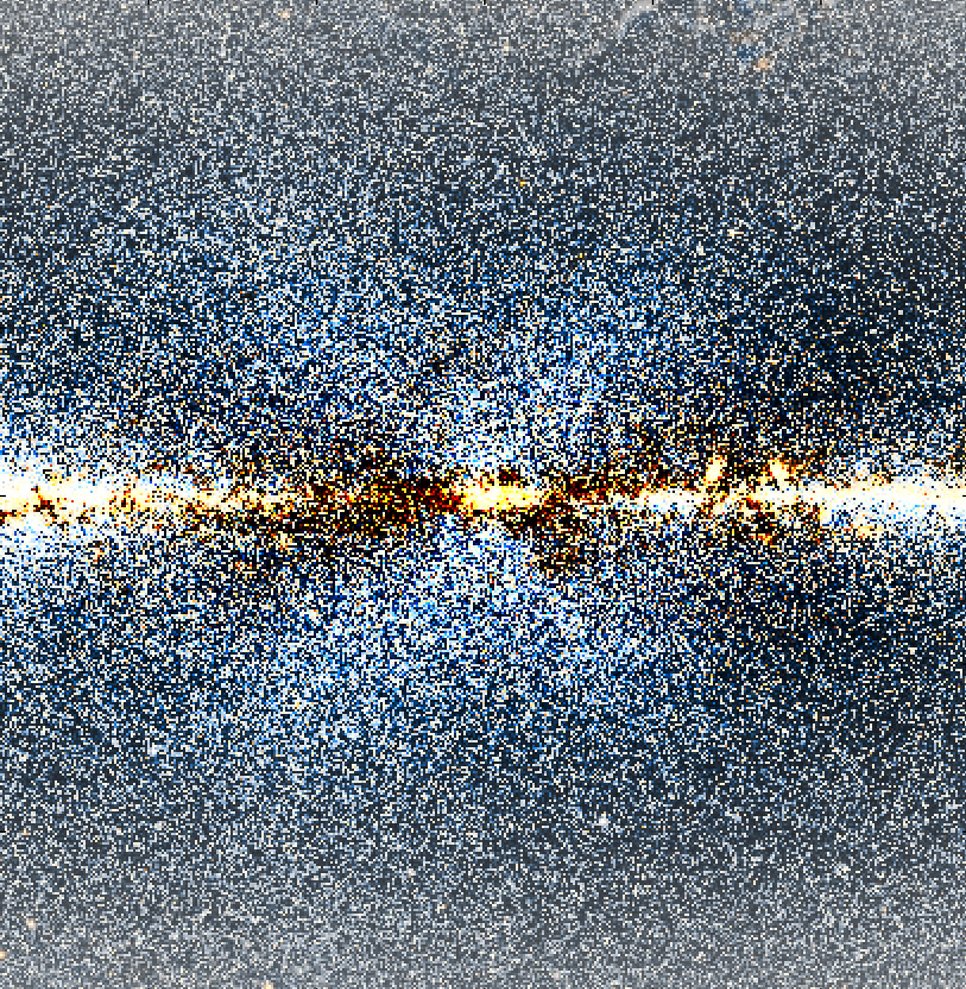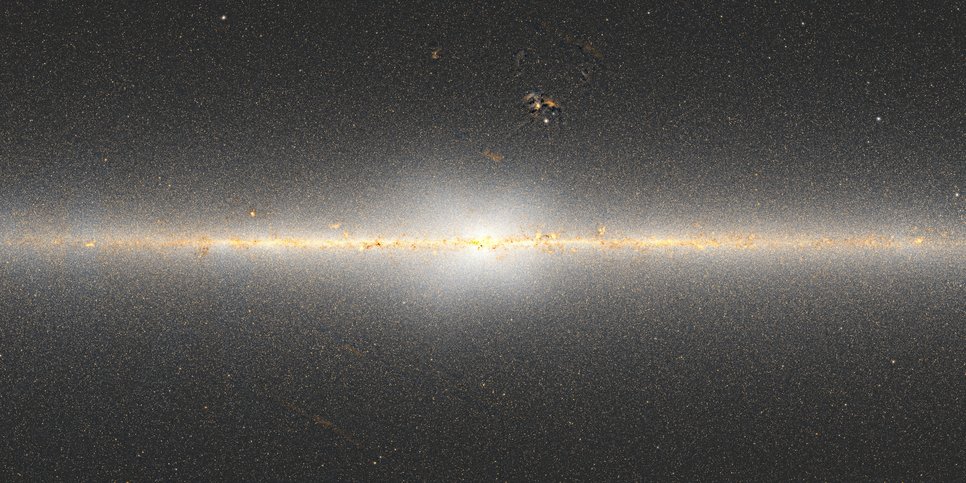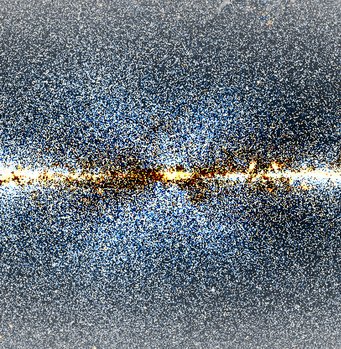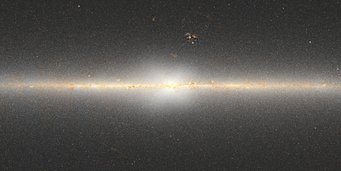Gigantic X-shaped structure throws (infrared) light on Galactic history
Two astronomers have produced the first direct images of a gigantic X-shaped distribution of stars in the center of the Milky Way. The collaboration shows the value of open science: it began when Dustin Lang (University of Toronto) tweeted an image he had recently created. From the tweet, Melissa Ness (Max Planck Institute for Astronomy) recognized the image's significance for reconstructing the history of our home galaxy. The X-shaped distribution indicates that the bulge of stars surrounding the center of the galactic disk was formed through dynamical interactions of stars, not by the merger of smaller galaxies with our own.

Sometimes, new science starts with a single tweet. When Dustin Lang of the Dunlap Institute for Astronomy & Astrophysics at the University of Toronto tweeted an image of the Milky Way in May 2015, he was glad to have finished a complex project ("I don’t want to admit how long it took to summarize 150 gigapixels into this WISE [image]," his comment read). He didn't realize the tweet would kick off a new study altogether.
But when Melissa Ness of the Max Planck Institute for Astronomy saw the tweet, she recognized traces of a structure astronomers had long sought for, but never seen directly in an image: an X-shaped distribution of stars in the central region ("bulge") of the Milky Way.
Ness and Lang met in person a few weeks later at a conference and began to collaborate, processing the maps to obtain the first clear image of the giant X at the heart of our galaxy. The results have recently been published in the Astronomical Journal.

For astronomers like Ness, who are interested in the evolution of our home galaxy, the shape of the bulge is a key marker of Milky Way history. As Ness states, "If we understand the bulge we will understand the key processes that have formed and shaped our galaxy." In particular, the presence of the X shape indicates that the central bulge of stars in our Milky Way formed from dynamical interactions of our galaxy's stars and not, as an alternative model posits, from mergers of smaller galaxies with our Milky Way.
For Lang, the collaboration holds a more general lesson about open science. He says: "To me, this study is an example of the interesting, serendipitous science that can come from large data sets that are publicly available," he said. "I'm very pleased to see my WISE sky maps being used to answer questions that I didn't even know existed."
Additional information
- Original article (ADS entry)
- Press release Jet Propulsion Laboratory
- Press release University of Toronto
- Dustin Lang's interactive version of his WISE map
A more complete explanation of the research and its context can be found on this background page.

